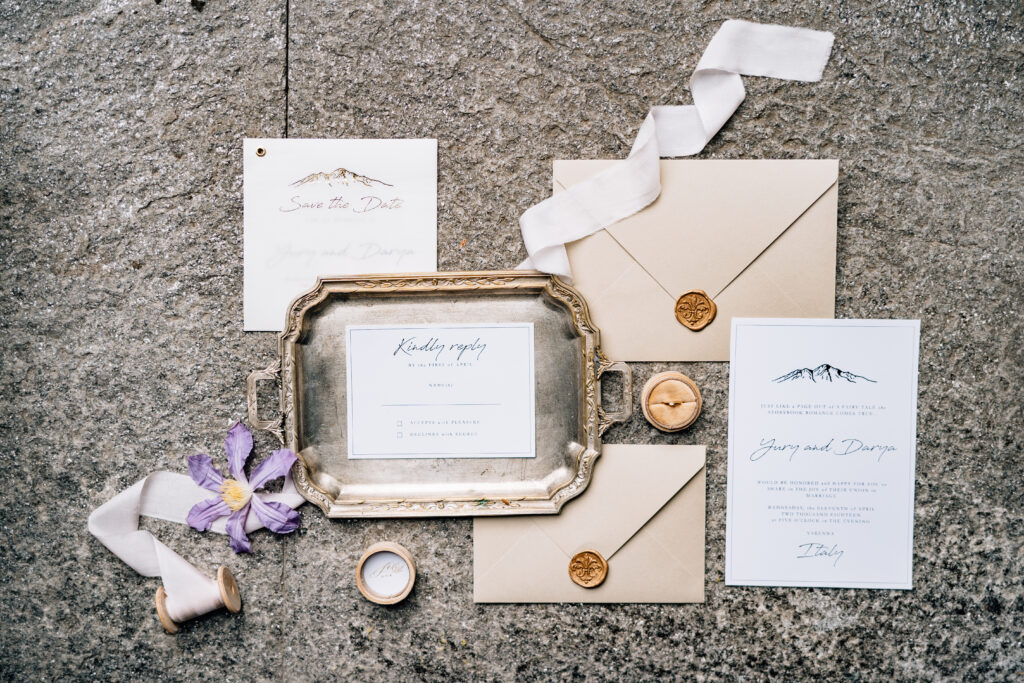When it comes to planning your wedding, every detail matters, and wedding invitations play a crucial role in setting the tone for your big day. The way you handle your wedding invitations reflects your attention to detail and the significance of the event. In this guide, we will explore the correct etiquette for wedding invitations and provide answers to common questions about this essential aspect of wedding planning.

What is the Correct Etiquette for Wedding Invitations?
Wedding invitation etiquette is a set of established rules and customs that help you create elegant and respectful invitations. Some key etiquette tips to consider include:
- Sending Invitations on Time: Send your wedding invitations six to eight weeks before the big day, allowing guests ample time to RSVP and make arrangements.
- Proper Wording: Use formal language, including full names and titles. Mention the hosts, request the honor of the guest’s presence, and include essential details like the date, time, and venue.
- Clear RSVP Instructions: Provide a response card with a pre-addressed and stamped envelope to make it easy for guests to RSVP.

What Needs to Be Included on a Wedding Invitation?
A standard wedding invitation should include:
- Names of the Hosts
- Request for the Guest’s Presence
- Names of the Couple
- Date and Time of the Wedding
- Venue Address
- Dress Code (if any)
- RSVP Information
Should Wedding Invitations Be Engraved?
Engraving is a classic and elegant method of printing wedding invitations. While it is more expensive than other printing methods, it provides a sophisticated and timeless look. Engraving creates raised text on the paper, making it a popular choice for formal weddings.
Can I Handwrite My Wedding Invitations?
Handwritten invitations are a charming and personal choice, especially for smaller, more intimate weddings. However, legibility and consistency are crucial. If you choose to handwrite your invitations, consider hiring a professional calligrapher.
What is the Etiquette for Name Engraving?
When engraving names, it’s customary to include full names and titles (e.g., Mr. and Mrs. John Smith). Be consistent with your naming format throughout the invitations.
What is the Difference Between Marking and Engraving?
Marking and engraving are two different printing techniques. Engraving involves etching the design into a plate, creating a raised impression. Marking, on the other hand, often involves printing with ink or other methods, resulting in a flat image.
What is a Good Engraving Quote?
A good engraving quote adds a personal touch to your wedding invitations. Consider meaningful quotes or phrases that resonate with you and your partner. Quotes from literature, love songs, or personal sentiments are all excellent choices.
What are the Two Types of Engraving?
The two primary types of engraving are traditional engraving and thermography. Traditional engraving involves physically etching the design into a metal plate, while thermography uses heat to create a raised, textured effect. Traditional engraving is the more classic and luxurious option.
What is the Difference Between Engraving and Inscription?
Engraving refers to the process of cutting or etching a design into a surface, often creating a raised impression. An inscription, on the other hand, is simply the text or message you include on your wedding invitations, which can be achieved through various printing methods.
What is the Difference Between Engraving and Stamping?
Engraving is a method of printing that raises the text or design, creating a tactile effect. Stamping, on the other hand, typically involves pressing ink onto paper, resulting in a flat, printed surface.
What is Traditional Engraving?
Traditional engraving, as mentioned earlier, is a method that involves creating a raised impression on paper. It is known for its elegance and timelessness.
How Are Wedding Invitations Engraved?
Engraved wedding invitations are created by etching the design onto a metal plate, applying ink to the plate, and then pressing it onto the paper, creating a raised impression.
Do Wedding Invitations Need a Stamp?
Yes, it’s a good idea to include a stamp on the RSVP envelope, making it convenient for guests to respond. It’s a courteous gesture and ensures a higher response rate.
What Color Should Be?
The color of your wedding invitations should complement your wedding theme and colors. Common choices include white, ivory, or shades that match your wedding’s color palette. Always ensure that the text is legible and contrasts well with the background.

In conclusion, wedding invitations are more than just pieces of paper, they are the first glimpse your guests have of your special day. By following proper etiquette and choosing the right printing method, you can set the tone for a memorable and elegant wedding. Whether you opt for classic engraved invitations or handwritten notes, remember that your wedding invitations are a reflection of your love and commitment.

